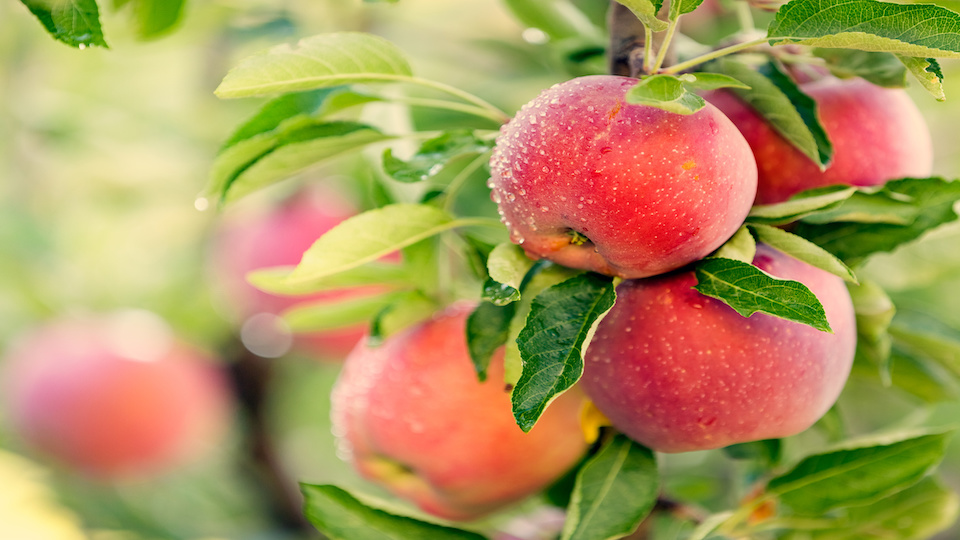The humble but tasty apple is the quintessential fruit of fall. If you have fond memories of apple picking in sweater weather, you may be toying with the idea of growing your own apple tree. A small home orchard is doable for most yards, but there are a few important things you need to know before you get started.
Where Can You Grow Apples?
The first factor to consider is if you live in the right climate for apple trees. If you go apple picking near your home, that’s a good clue that you do. But you’ll also need to consider the variety and chill hours. The chill hour requirement refers to the number of hours at a temperature between 32 and 45 degrees Fahrenheit a particular type of fruit tree needs during the winter.
If a fruit tree doesn’t get its chill hour requirement it won’t develop flowers or set fruit. When choosing varieties for your apple orchard, look at the chill hours and how many you get in your region. Nurseries selling apple trees also make it a little easier by labeling varieties by USDA (United States Department of Agriculture) zone. These are the climatic zones in the U.S. Apple trees generally grow in zones 4 through 8, but know your zone before you choose trees.
One Apple Tree May Not Be Enough
Also important to getting fruit from your apple tree is pollination. To produce fruit, flowers must be pollinated. There are some varieties that will pollinate themselves, known as self-fertile apples. Technically you can get away with one of these trees and still get fruit, but your harvest will be much better if you have a second tree of a different variety for pollination.
Keep in mind that a list you find of self-fertile varieties may include those that are only partially self-fertile. The best bet for a fruitful harvest of apples is to get two trees. You can find charts online of apple variety compatibility for pollination. For instance, Honeycrisp works well with Gala but not with Jonagold.
Make sure you have room for two trees, which should be no more than 50 feet apart before you start your orchard. If space is limited, consider getting dwarf trees, which grow smaller than regular fruit trees.
What Else Do Apples Need?
Choosing the right varieties for your backyard apple trees, taking into consideration climate, chill hours and pollination will set you up for success. Now you need to make sure you give those trees the right conditions and care. These are some of the important things to consider in where and how you plant the trees and their ongoing maintenance:
- Apple trees need soil that drains well; standing water will cause rot.
- Soil should be rich and fertile with compost or other organic materials.
- An apple tree needs full sunlight, at least six hours per day of direct sun.
- Space full-sized trees about 15 to 18 feet from each other; dwarf varieties can be as close as four feet.
- Never fertilize a fruit tree while planting; this can burn the roots.
- Water apple trees regularly in the first growing season.
- In subsequent years, when established, apple trees only need watering when there is inadequate rainfall.
- Mature apple trees need pruning every year.
- Look regularly for signs of disease or pests to stay ahead of any issues.
When in Doubt, Contact Your Local Extension Office
Growing fruit trees is not necessarily difficult, but success relies on knowing what you’re doing. There are some details that can be easy to miss if you’re not an expert. But that’s what your local extension office is for, so take advantage of it when you have questions.
The USDA manages the Cooperative Extension System, which is a network of offices associated with land-grant universities, state governments, and local governments. Each office is available to residents in the area to provide information on gardening and farming. Find your local office online and get your questions answered, get ideas for the best apple varieties to grow in your yard, information about local pests or diseases, and even soil testing.
Growing apple trees can be a great gardening activity, even for a newbie to fruit trees. Do a little research, be in contact with your local extension office, and be prepared to baby your trees in the first couple of years until they are well-established and ready to bear fruit.
-Mary Ellen Ellis



